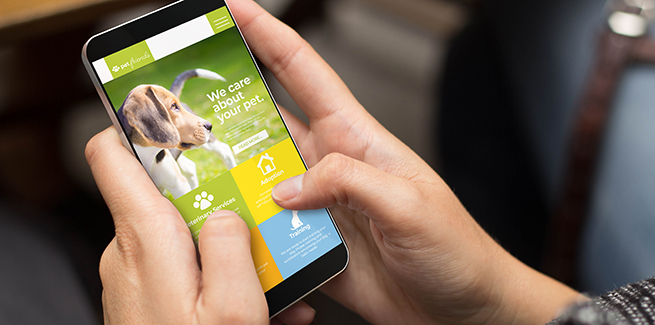Postsurgical rechecks made simple with virtual care

According to the American Veterinary Medical Association (AVMA), "It's clear that virtual care is emerging as an inevitable part of the modern veterinary practice."[1] Telehealth and virtual care are not designed to replace your practice or expertise. It is meant to serve as a tool to enhance it! But where do you get started? There are five clinical scenarios that the AVMA mentions: postsurgical care, hospice, general wellness advice, after-hours care, and expanding access to veterinary care. In each of these scenarios, the presumed current protocol most practices are utilizing will be compared to an enhanced protocol based on how virtual care and technology can help. Let's get started with post-surgical rechecks.
The typical current protocol for routine surgeries looks like this: The pre-surgery requires reminder phone calls and client education critical for patient safety and outcomes. On surgery day, the procedure is performed, medication dispensed, and a recheck (aka Progress Exam) appointment is made for about 7-14 days from the surgery date. The pet parent must bring the pet into the clinic for the medical progress check. A technician usually is responsible for examining the suture line and interviewing the pet parent about medication adherence and the pet’s activity. The pet is discharged without the need for additional follow-ups.
It is important to note, after a routine spay/neuter, this is where the relationship can end for a veterinary practice, especially if the pet is a healthy, young animal. The veterinary practice may not see this pet again for at least a year or, according to Banfield, about 16.9 months[2]. According to the AVMA Pet Demographic study, 30% of pet owners did not visit a veterinarian within the last 12 months and reported that the reason was that the pet was not sick or injured.[3] Veterinary visits are down significantly[4], so this pet may never return, especially if they are getting core vaccines at another location like a low-cost community-based medicine event or non-traditional mobile vaccine clinic. In fact, according to the 2017-2018 AVMA Pet Ownership & Demographics Sourcebook, “21% of dog owners obtained routine care from a pet health provider other than a veterinarian.” This client is probably fairly typical of the trend we are seeing in veterinary medicine and getting routine preventatives such as heartworm or flea/tick from online outlets further affects the frequency of visits to the veterinary hospital.
How can a veterinary hospital keep its finger on the pulse of today’s pet parents and use technology to build a stronger relationship? Virtual care can help. According to Bruce Truman, Vice President of Sales and Marketing at BabelVet, “Routine surgeries like spay/neuters, dental extractions, skin wounds, and lumpectomies can be managed in a whole new way with virtual care. Pre-surgical instructions and reminders, as well as post-surgery follow-ups, can now be managed remotely!” This can drastically improve your practice’s workflow and client communications - not to mention, increase revenue from services and building a medical profit center! Consider an enhanced protocol using virtual care. Link here
[1] https://www.avma.org/practicemanagement/telehealth/Documents/Telehealth-Virtual-Care-Brochure.pdf
[2] Partners for Healthy Pets. Reversing the Decline in Veterinary Care Utilization: Progress Made, Challenges Remain. 2014. (Cited by State of Pet Health - Banfield 2015)
[3] https://ebusiness.avma.org/ProductCatalog/product.aspx?ID=1531
[4] VHMA Insiders’ Insights Report



